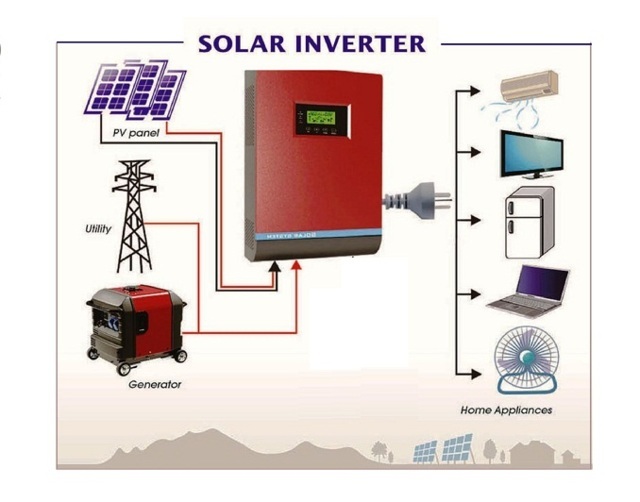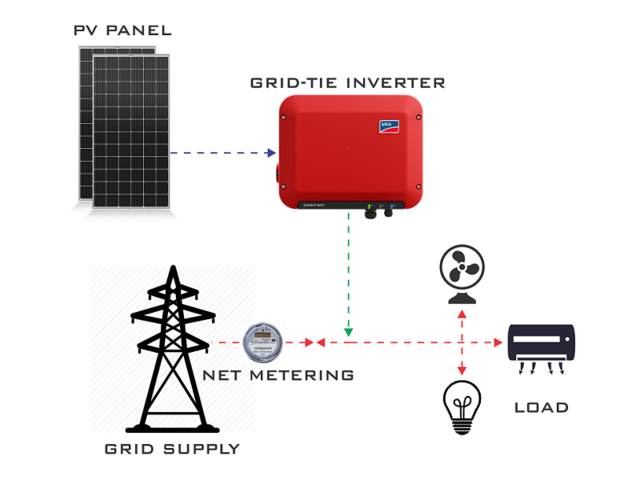The grid-tied inverter is an important part of the solar power system. Without this inverter, the system cannot function. In this article, VPIC will share detailed information about grid-tied inverters as well as how many types of inverters exist and how they work.
Invite you to refer to the information below

1 – What is a grid-tied inverter?
This inverter also known as Solar Inverter, its function is to convert direct DC current generated by solar panels into AC alternating current and supply to devices. used. Therefore, the inverter is an important device in the solar system after the solar panel.
During use, the following 3 cases will occur:
+ When the electricity generated from solar energy is equal to the electricity consumed by the loads, then the load will consume 100% of the electricity from the sun.
+ When the power generated from solar energy is smaller than the electricity consumed by the loads, the load will automatically draw more electricity from the grid to supply the loads.
+ When the power generated from solar energy is larger, then the excess power will be returned to the grid.
2 – Types of grid-tied inverters
2.1 – Grid inverter with storage
This inverter will have an additional battery to go with the system. The inverter will then convert the power from the sun into AC power, which will then be stored in the battery. From there supply to other devices to consume.
2.2 – Grid-tied inverter without storage
This inverter will not have a battery attached. Therefore, when solar power is absorbed by the panels and converted into AC current by the inverter, it will be supplied directly to the consuming devices and the excess electricity will be returned to the grid without storing it. again.
Therefore, if the grid power system is cut off, the system will not be able to supply electricity to the consuming loads.
3 – Principle of operation
The grid-tied inverter has a fairly simple operating principle. That’s when solar panels absorb energy from the sun and convert it into direct current. Then through the inverter, the direct current will be converted into alternating current. Then the solar power will be returned to the grid for consumption.

4 – Selection criteria inverter
The choice of grid-tied inverter depends on many factors as well as the needs and capabilities of the user. But in general, it is also necessary to meet the following factors:
+ Should choose inverters with reliable brands and origins, as well as certified quality.
+ Choose the type of inverter with specifications that meet the needs as well as the type specialized for grid-tied applications.
+ Choose the type of inverter with modern features, meeting the monitoring.
+ Should buy grid-tied inverters at reputable units with warranty policies and support for construction and installation.

 Tiếng Việt
Tiếng Việt
Your writing carries a quiet power, subtly shaping the way you see the world.
Thanks you alot sir, have you have a great days